In a Christchurch Scarred with Earthquake Rubble, Art and Dance-O-Mats Color the Voids
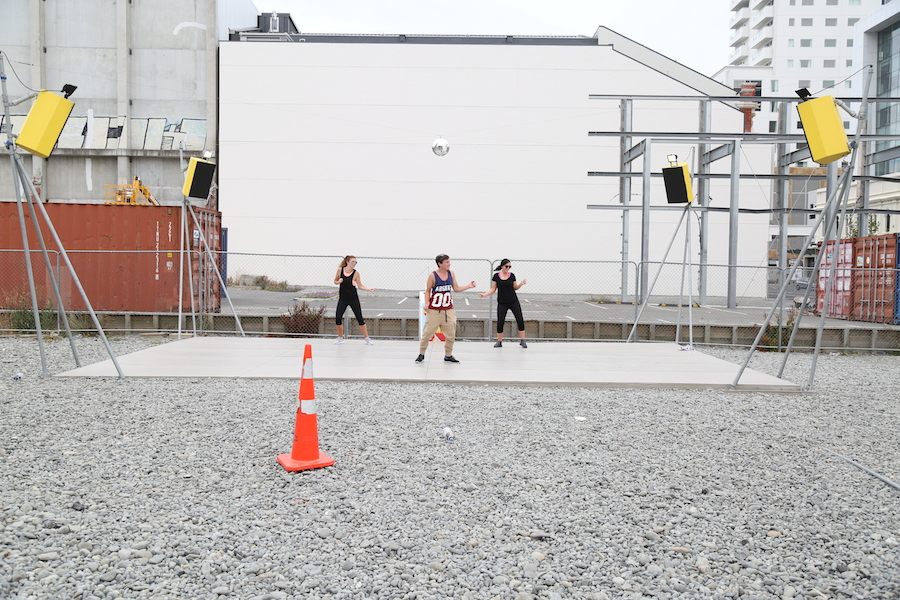 Dancers at the Dance-O-Mat in Christchurch, New Zealand (all photographs by the author)
Dancers at the Dance-O-Mat in Christchurch, New Zealand (all photographs by the author)
The two dancers shuffled through songs on their iPhones, deciding which track they would dance to next. Their stage was behind them, a polished wooden square situated at the center of a vacant lot in Christchurch, New Zealand. Huge yellow speakers leaned out from all four corners, turned up high.
Then it was decided. The next song would be Bruno Mars’ “Uptown Funk.”
Plugging her phone into a washing machine on the edge of the dance floor, one of the dancers, Grace Cabell, checked the coin slot on the side of the machine then pushed play. Across the front of the machine was a label: “Dance-O-Mat.”
“You just have to put two dollars in and the machine plays your songs through the speakers,” she told me. “Luckily someone else must’ve just put money in. We don’t have to pay!”
The performance unfolded for a select audience of passersby, including a Canadian tourist who promptly left his two friends to join in. Funky bass lines and Mars’ high tenor reverberated among nearby pillars of concrete and mangled steel.
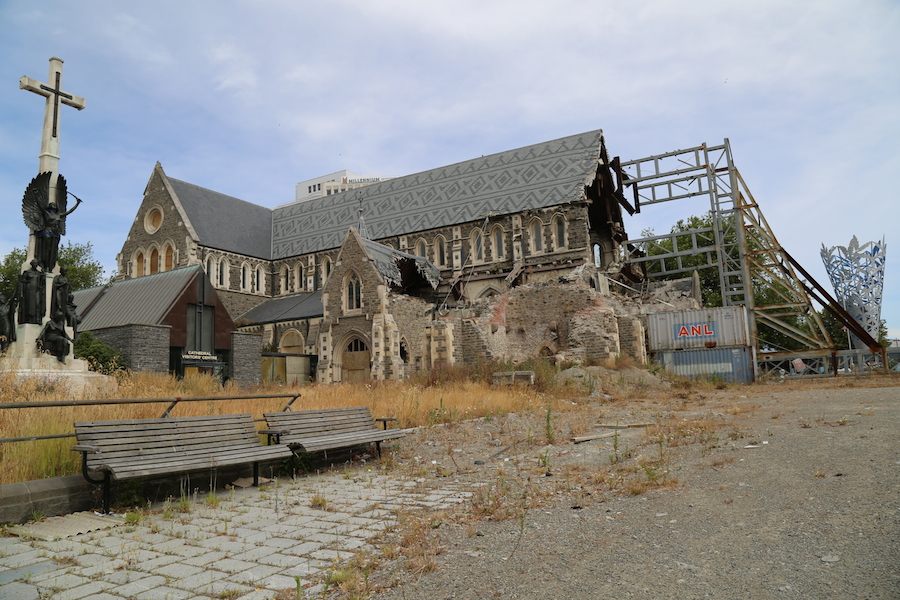 The remains of the Christchurch Cathedral, with the Chalice sculpture celebrating the city’s 150th anniversary visible behind.
The remains of the Christchurch Cathedral, with the Chalice sculpture celebrating the city’s 150th anniversary visible behind.
The Dance-O-Mat is just one example of the artistic projects brought to the city by Gap Filler, an urban regeneration initiative founded after the September 2010 earthquake to fill the void of destroyed buildings. When a magnitude 6.3 earthquake struck the Canterbury Region of the South Island in February of 2011, the project became one of several independent and government initiatives regenerating the city center. Now, Christchurch is host to murals, portable planters, a diverse array of sculptures, and other temporary exhibitions.
“People are really stepping up,” said Cabell, who works as a reporter for The Christchurch Star. “The city council is out of funding, so it’s great to see so many volunteers and artists bringing life to the city.”
Nearly four years after the Canterbury quake, Christchurch still bears the scars of the deadly natural disaster. To the outside eye, it’s as if the town is in an eerie limbo.
Businesses are starting to reopen and trickles of artistic vitality light up select spots in the city with splashes of color against a concrete backdrop. Tourists who visit turn their cameras on the city’s wreckage as much as on its main attractions.
“People are taking things into their own hands,” Cabell said as the song came to an end. But she acknowledged that the repairs are slow, and that the city is far from regaining its former glory.
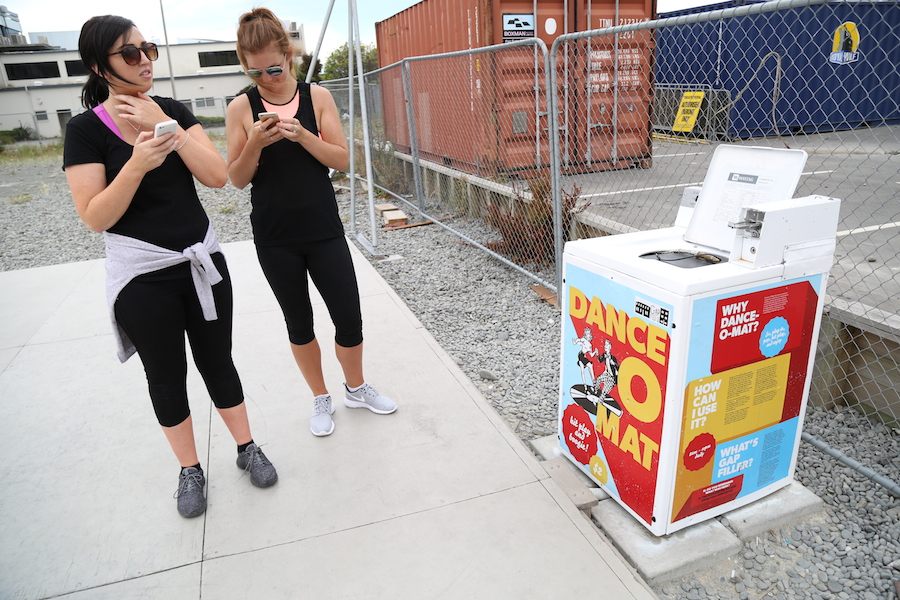 Grace Cabell (left) and her dance partner, Sally Hoskin gear up to use the Dance-O-Mat.
Grace Cabell (left) and her dance partner, Sally Hoskin gear up to use the Dance-O-Mat.
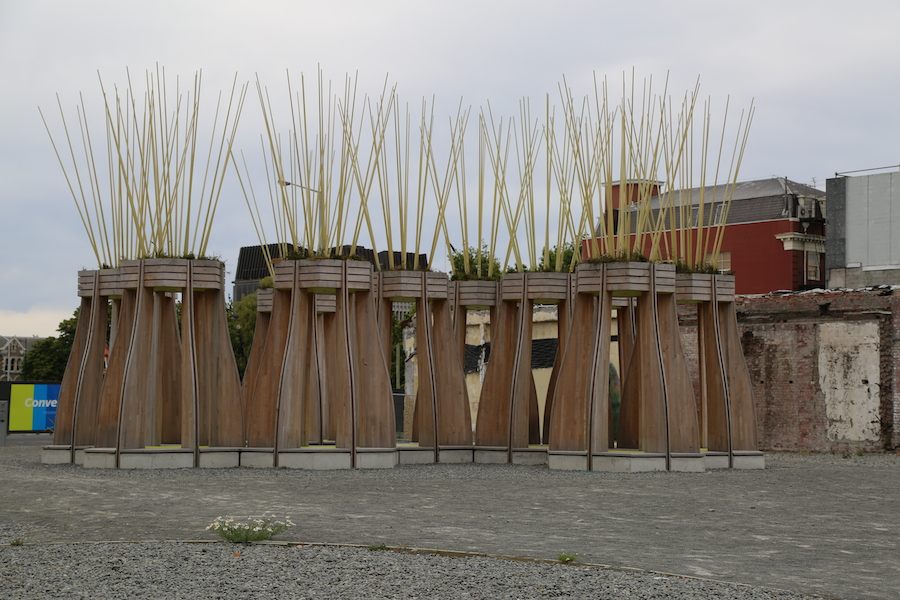 A Gap Filler sculpture in the same vacant lot across from the Dance-O-Mat.
A Gap Filler sculpture in the same vacant lot across from the Dance-O-Mat.
 Behind the lot, the ruins of a collapsed building have been walled off.
Behind the lot, the ruins of a collapsed building have been walled off.
 Downtown Christchurch
Downtown Christchurch
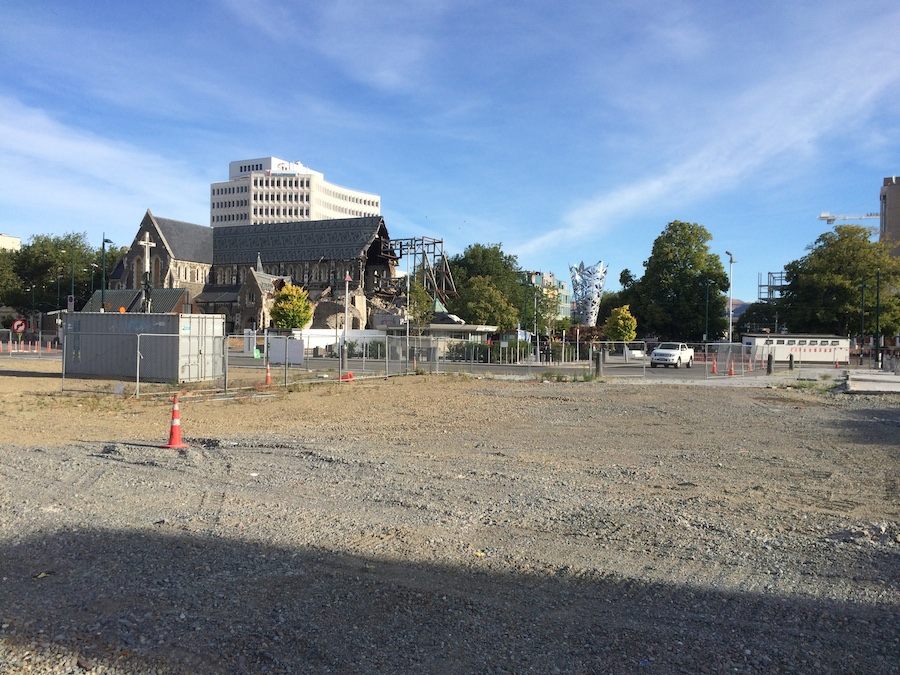 Approaching Cathedral Square. This area may have seen more foot traffic around the time it was reopened in July 2013.
Approaching Cathedral Square. This area may have seen more foot traffic around the time it was reopened in July 2013.
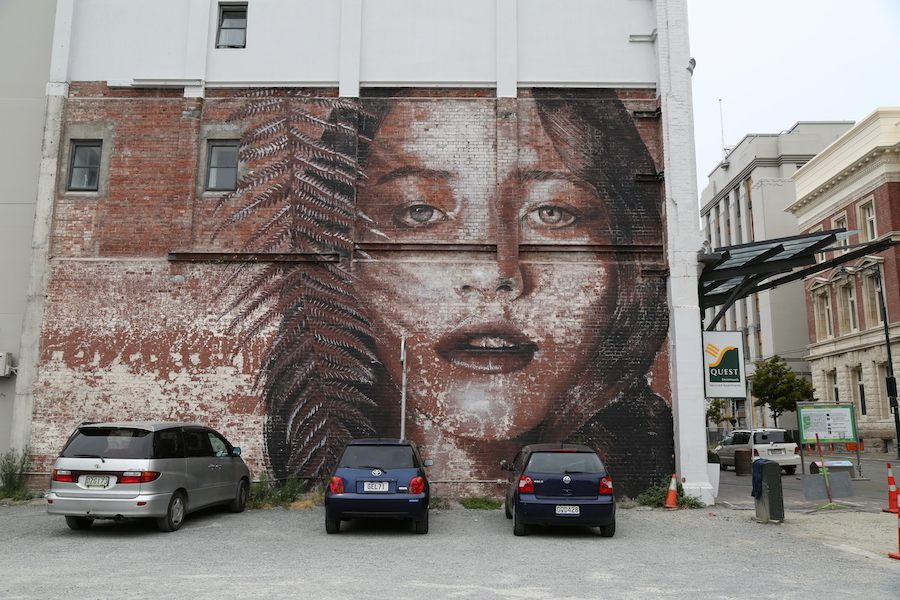 A mural just off Cathedral Square.
A mural just off Cathedral Square.
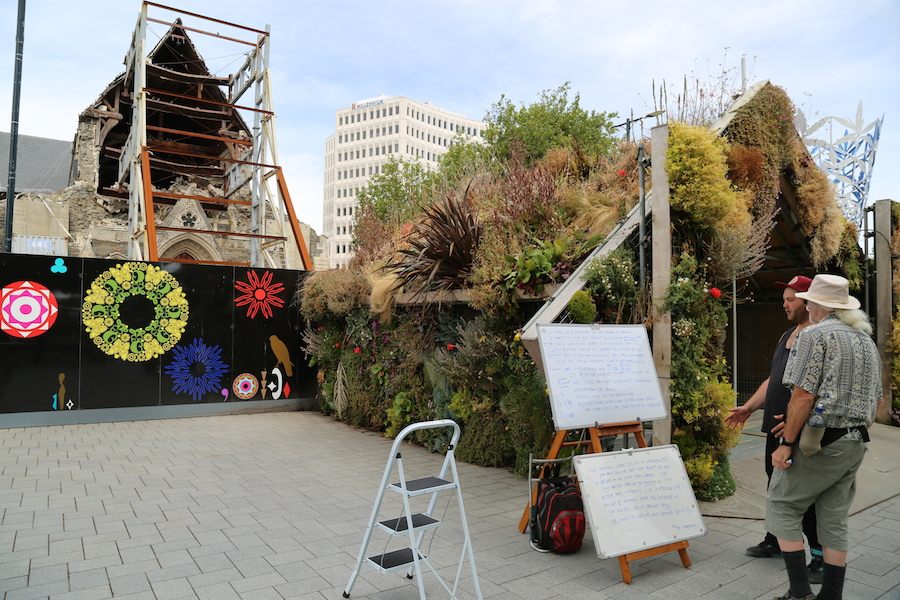
An installation surrounding the Cathedral by New Zealand artist Chris Heaphy as part of The Cathedral Square Project. The walls extend for hundreds of meters and are adorned with original graphics. They’re accompanied by a traditional Maori whare (house) made of plants (left).
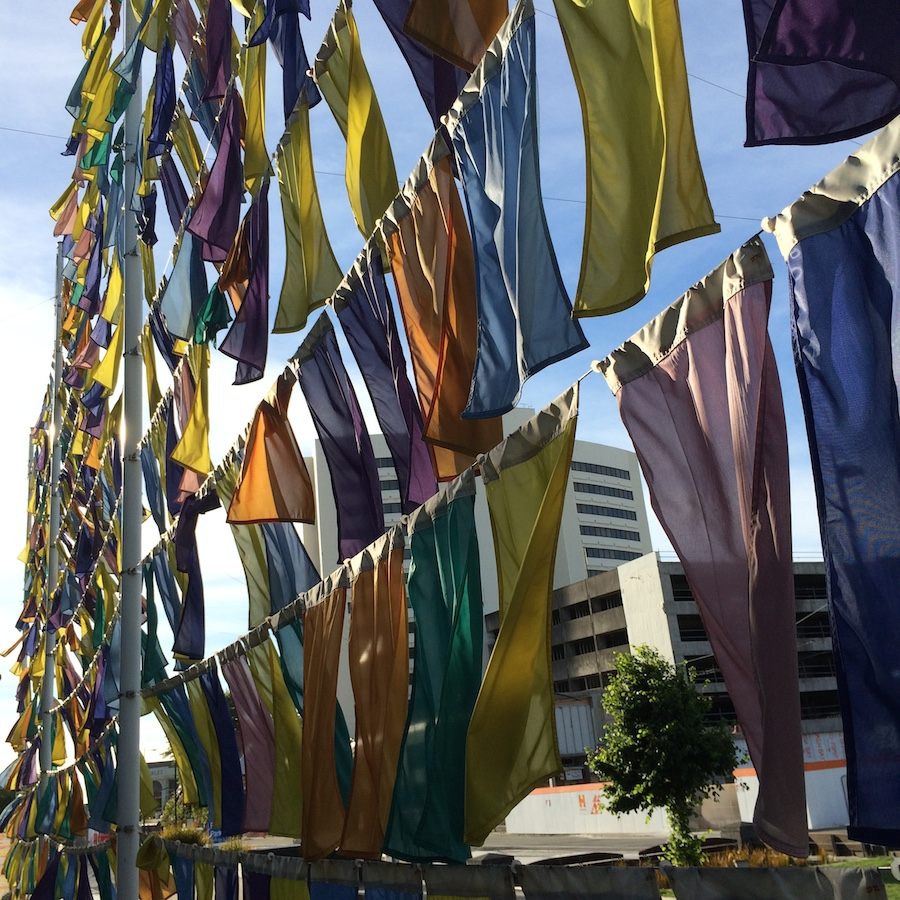 Flag Wall by artist Sarah Hughes, part of The Cathedral Square Project, offers a splash of color in the damaged Cathedral Square.
Flag Wall by artist Sarah Hughes, part of The Cathedral Square Project, offers a splash of color in the damaged Cathedral Square.

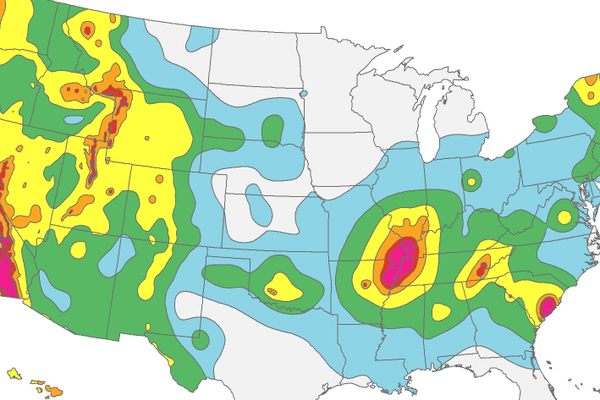
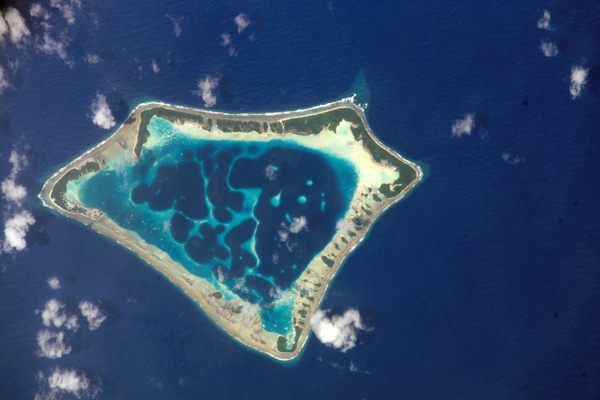

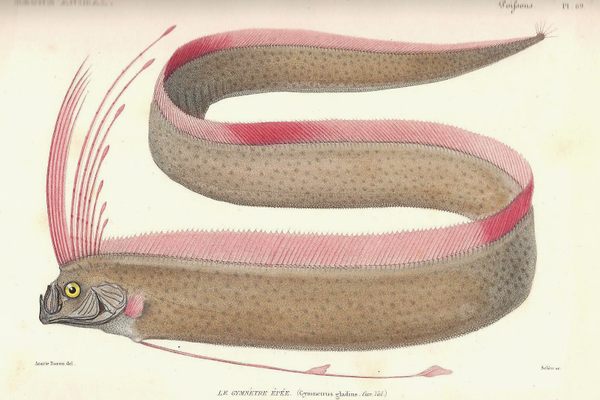


















Follow us on Twitter to get the latest on the world's hidden wonders.
Like us on Facebook to get the latest on the world's hidden wonders.
Follow us on Twitter Like us on Facebook